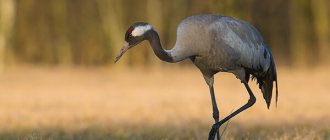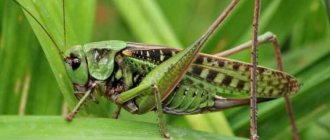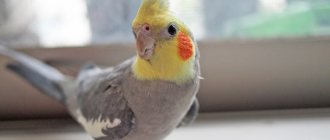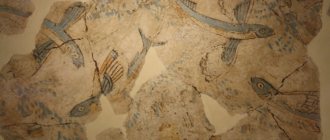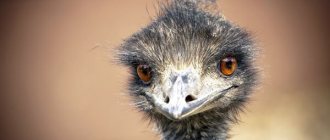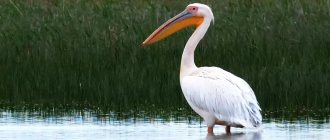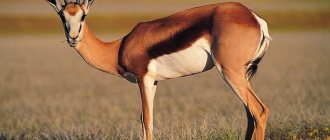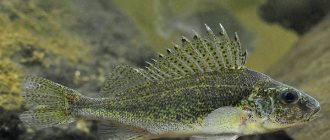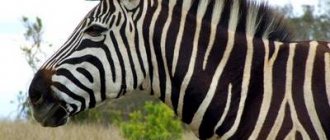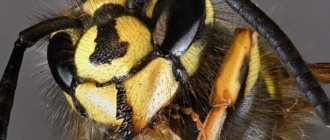Daphnia (lat. Daphnia) - is plankton, a representative of small crustaceans. It is a small crustacean that lives in fresh water almost throughout the planet. It has a miniature size and is an important chain of the ecological system.
Due to its rapid reproduction, daphnia is eaten by many fish and amphibians.
It was discovered in 1785 by Professor Müller.
The order consists of 50 species that differ significantly from each other. There are two large subspecies Daphnia and Ctenodaphnia.
The ancestors of modern daphnia appeared more than 150 million years ago, during the Jurassic period. During this time, the crustacean constantly evolved, constantly adapting to changing conditions, giving rise to new species. The Cretaceous period consolidated the characteristics inherent in modern daphnia.
Daphnia species and habitat
There are approximately 150 species in Europe and North America (many of these species found on both continents were accidentally introduced by humans or appeared naturally). Many alien species came to Europe and America from Asia and Africa (the notorious species Daphnia lumholtzi, which naturally lives in Africa). It is not uncommon for there to be 20 or more species at the bottom of a small lake. Several species of Cladocera are carnivorous, although most are herbivores or detritivores. As an important link in the food chain of almost any body of water, cladocerans process phytoplankton/benthic plants, bacteria, fungi and rotting organic matter of animal tissue that could be used by large animals. In large lakes, cladocerans are the main food for most types of fish, such as stickleback, minnows, juveniles of large species, as well as amphibian larvae. Many aquatic larvae of insects and other invertebrates also feed on cladocerans.
The daphnia covered in this article feeds on particles on the water surface (phytoplankton, as well as plant and decaying organic matter), mainly free-floating algae (species of the genus Chlamydomanas and Volvox), bacteria and fungi. During the summer months, they are often found in blooming ponds and lakes that have high concentrations of algae. The fertility of daphnia is simply amazing, which is associated with the implementation of parthenogenesis.
Parthenogenesis is the ability of self-reproduction without the need for fertilization (a type of asexual reproduction), when the offspring completely repeats the genotype of the parent (clone), and any differences in the physiological state are determined by environmental conditions. Parthenogenesis allows Daphnia to reproduce rapidly under favorable conditions (food, temperature, etc.) shortly after they emerge from the eggs. In nature, at the end of spring, summer and beginning of autumn (depending on temperature, food availability and the presence of products of their metabolism), daphnia reproduces parthenogenetically, giving birth to an average of 10 nauplii for each adult individual (during this period only females are present in the reservoir). The developing embryo is often visible inside the mother's body without a microscope. Females of the next generation are capable of parthenogenesis after 4 days of development, with births occurring every three days. During her life cycle, a female can give birth 25 times (in practice, this number is slightly less and the female tends to produce no more than 100 offspring).
With a lack of food, some eggs develop into males, and females begin to produce eggs that must be fertilized (with a haploid set of chromosomes). The latter develop into small embryos, which then go dormant and become covered with a dark brown/black saddle-shaped shell known as an ephippium (Latin for "saddle"). In this form, daphnia can tolerate harsh environmental conditions, short-term drying out of the reservoir and even its freezing. Females born to form an ephippium are easily distinguished from parthenogenetic individuals because the developing ephippium is present in them as a black spot at the posterior end of the body. When environmental conditions become favorable again, a generation emerges from the eggs, which, in turn, gives birth to only females (all males die before the onset of unfavorable conditions).
The reproduction cycle of the daphnia population is usually represented by two waves, when their numbers begin to increase almost logarithmically due to parthenogenesis until the moment of overpopulation, and then, with a lack of nutrition and cold weather, a decrease in numbers occurs and the formation of ephippia. Each year, as a rule, there are two such waves, although under favorable conditions there may be more.
This review examines the species D. Pulex and its varieties, which are often found in the northern hemisphere. However, what is written will also be true for most other species that are included in the same or related genus. Daphnia is extremely sensitive to water pollution, and a number of studies and industrial works have used it to determine the cleanliness of water bodies. For example, halides such as chlorides and fluorides in tap water are very toxic to it. In addition, Daphnia is sensitive to the concentration of sodium, potassium, magnesium and calcium, the increase of which causes immobilization and death, and is also most susceptible to copper, zinc and most dissolved toxins (dichromate ions). They are often used to monitor water quality before releasing industrial waters into the environment.
In terms of its nutritional value, the dry matter of daphnia contains 50% protein, about 20-27% fat for adults (4-6% for juveniles). Some species have higher protein content, such as Moina, which contains 70% protein. Like most organisms used as live food, they are what they eat, so daphnia, brine shrimp and other crustaceans need to be fed a fortified feed rich in unsaturated fatty acids.
Benefits and harms for the aquarium
These are useful creatures that filter water and regulate the microflora of the aquarium. They serve as live food for many inhabitants of the home pond.
The water flea is not capable of biting a person or harming aquarium fish, since crustaceans do not have a piercing-sucking oral cavity. Allegations regarding bites are fictional.
The main harm of copepods is associated with their high allergenicity. An allergic reaction is caused by the dusty suspension obtained when they are dried for use as dry food.
When dust particles enter a person, an allergic reaction may begin, accompanied by a dry cough, redness of the eyes, excessive lacrimation, runny nose, and exacerbation of bronchial asthma. After some time, a skin rash, itching, and burning appears.
To treat allergies, you should immediately seek medical help or take an antihistamine.
Value as fish food
The water flea is very often used as food for aquarium inhabitants. Crayfish contain up to 70% protein. It is given to fish in dry, fresh or frozen form. Crustaceans are caught in reservoirs or bred at home.
Daphnia structure
Figure 1. Anatomical structure of Daphnia pulex (De Geer) (under high magnification);
schematically; (muscles are not shown in Figure 1). B, brain; BC, brood chamber; C, cecum; CE, metafacet eye; F, vaulted formation; FA, first antenna (antenna); H, heart; INT, intestine; O, compound eye; OV, ovary; R, proboscis; SG, putamen gland (Figure 1 is highly modified from Storch, 1925.) Figure 2. Photograph of a female Daphnia magna (plosbiology.org/article/info:doi/10.1371/journal.pbio.0030253). Daphnia is almost kidney-shaped, with only one compound eye (besides an additional simple compound eye), two double-armed antennae (often half the body length or more), and leaf-like limbs inside the carapace that create a current of water that carries food and oxygen to the mouth and gills. The body is transparent and you can see the heartbeat, as well as sometimes a green mass in the intestines when the daphnia has eaten algae.
The carapace covering the body includes 4-6 pairs of thoracic limbs, which are used for bearing offspring. The abdominal and postabdominal (distal to the anus) legs are usually bent forward towards the chest. Downward movement in the water column is ensured by the flapping of large second antennas.
In most species, complex movements of the thoracic limbs create a constant flow of water between the segments. Small particles (less than 50 µm in diameter) are filtered by the ends of the bristles of the thoracic legs and carried along the groove at their base to the mouth. Although there is evidence that some types of algae, bacteria and protozoa are selected for feeding, the dominant view is that all organic particles of appropriate size are indiscriminately consumed. When unwanted or large tangled pieces of matter become stuck between the mandibles, they are removed using the setae of the first legs and then thrown out of the carapace by the postabdominal legs.
Males differ from females in their smaller body size, elongated antennules, modified postabdominal and first limbs, which are armed with hooks for hooking.
Depending on the species, the size of adult individuals varies from 0.5 to 10 mm. There can also be variability within a species (the female Daphnia magna reaches 3-5 mm).
Sometimes the coloring of daphnia is used to determine their species. However, this is a poor criterion because within a species, genetically determined coloration can vary depending on the adaptive physiology of the daphnia. In water that has low oxygen levels, the crustacean's body produces more hemoglobin to increase oxygen binding. Oxyhemoglobin colors the body red. Similar individuals in an oxygen-rich environment tend to take on a yellow, almost colorless color. Compared to other representatives of the genus Daphnia hyalina has a low hemoglobin concentration. This species is often found in open waters rich in oxygen. Coloring also greatly depends on diet. For example, a daphnia that recently consumed algae turns transparent green, while an individual that consumed bacteria turns orange-pink.
The duration of the Daphnia life cycle, from hatching from the egg to the death of the adult, is highly dependent on the species and environmental conditions (Pennak, 1978). As temperature increases, life expectancy decreases, which is caused by increased metabolism. The average lifespan of D. Magna at a temperature of 200C is 56 days, and at 250C only 40 days. The following stages can be distinguished in the Daphnia cycle: egg, juvenile, juvenile and adult (Pennak, 1978). Typically, 6-10 eggs are kept in the brood chamber. 2 days after maturation, young individuals similar to adults are released with the beginning of molting in the female (change of exoskeleton). Daphnia reaches sexual maturity at the age of 6-10 days. Most of the energy in Daphnia is spent on reproduction (D. magna 69%, D. pulex 67%), while only 23% is spent on growth. This highlights the advantage of rapid reproduction under favorable environmental conditions.
The release of the next generation of Daphnia magna.
What types should I use as fish food?
Many species of Daphnia and related genera can be used. However, the main focus should be on Daphnia pulex, Daphnia magna, as well as various species of Moina. Moina is a very small member of the Daphniidae family and is often used as a starter food instead of Artemia nauplii. Its young specimens are not much larger than recently hatched brine shrimp or daphnia at an early stage of development. Accurate identification of the Daphnia species is achieved by considering its size, the shape of the ephippium, the shape of the proboscis and the length of the post-abdominal legs, as well as their bristles (covering with small hair-like structures). It is worth noting that within each species there is usually heterogeneity of individuals, some of which stand out from the norm.
Daphnia pulex
Although it is a completely independent species, it is extremely difficult to distinguish it from other closely related forms (some are considered as an independent species, others as a subspecies, because there is hybridization. An example is D. galeata). In general, individuals of this species look like small copies of D. magna.
The photograph shows Daphnia pulex with the eggs they produce containing ephippia. The ephippium itself has not yet formed (By kaoruterra, flickr.com).
Males of Daphnia pulex usually measure 1.3-1.5 mm, and females 2.2-2.5 mm. The color of individuals varies from yellow to almost red, which is very similar to D. magna. The difference between these two species is the smaller size of Daphnia pulex, the presence of only bristly carapace legs near the post-abdominal region, a more triangular ephippium, non-parallel arrangement of the embryos and the presence of only one extension from the upper edge of the ephippium. D. pulex, which forms the ephippium, is fully prepared for the onset of unfavorable conditions.
Daphnia magna
Daphnia magna
Most aquarists traditionally associate it with Daphnia. Individuals of this species are the main source of live food at the initial stage of development of aquarist skills. Males are 2 mm long, females are 3-5 mm long. The color varies from yellow to orange-pink, which may indicate their nutritional value. D. magna tolerates significant temperature fluctuations, but 18-22 0C is optimal. In nature, Daphnia magna is a rather rare species, but it is abundant in its habitat. Like the ephippium of other Daphnia species, the ephippium of Magna is saddle-shaped. However, the embryos inside the ephippium (of which there are usually two in Daphnia) are arranged in parallel, and like a rectangle with an elongated edge, have two extensions at each end. Although Daphnia magna is capable of forming an ephippium, it is less sloping than that of Daphnia pulex. It is believed that it is more capricious and not as resistant to cultural contamination as Pulex.
Types of Moina
Types of Moina
similar to Daphnia and other members of the family Daphniidae, but completely different from the genus Daphnia. They are very small compared to most Daphniidae (less than 0.5 mm in length), and juveniles are the size of newly hatched brine shrimp. However, Moina culture is similar to Daphnia, they are difficult to obtain but can be used as starter food in place of Artemia nauplii.
Related species
Many species of Daphnia/Cladoceran can be found throughout the world. Some of them are presented below. It is worth noting that their capture will depend on the geographical location of the capture site.
D.hyalina
most often found in open waters of lakes. Compared to D. magna, D. hyalina is almost transparent, making it difficult to notice. Individuals of this species reach a length of 3 mm, the body is slightly rounded, and the head is less rounded and prominent compared to Daphnia magna.
Bosmina coregoni
represented by medium-sized individuals (about 1 mm in length), inhabiting grassy lakes and canals. Due to its small size, Bosmina is an attractive food for fry. This is a very active species that, without examination under a microscope or magnifying glass, can easily be confused with other small daphniids. Her body shape is like a pea that has begun to sprout. This species is usually found in Northern Europe. Interestingly, many of the "Moina" cultures are actually Bosmina cultures.
Simocephalus vetulus
a large daphniid that tends to colonize the upper film of water. Compared to other daphniids, Simocephalus vetulus is more tolerant of acidic environments and often reaches 6 mm in length. Distributed in Northern Europe.
ECOLOGICAL STOICHIOMETRY
The ecology of Daphnia pulex is determined by the availability and balance of nutrients, which influence traits that mediate intra- and interspecific interactions. Because nutrients are required for a variety of biological processes—for example, amino acid synthesis—the availability of these nutrients in the environment regulates subsequent characteristics of the organism. Low nutrient availability reduces both body size and growth rate, which, as noted above, regulates Daphnia's relationship with predators. In particular, Daphnia pulex is an important model species for environmental stoichiometry research, demonstrating that pond shading by trees increases nutrient concentrations relative to carbon in algae, which increase D. pulex body size and hence competitiveness and susceptibility to vertebrate predation .
Catching Daphnia
It all depends on the geographical location of the aquarist. The easiest to find are the most common Daphnia pulex and magna. For catching, it is necessary to choose lakes and ponds free of fish, because in the absence of the latter, more daphnia will be observed (due to the lack of predators) and, in addition, the absence of pathogens is guaranteed.
If the aquarist intends to catch daphnia from natural bodies of water, it is advisable to use a fine-mesh net or sieve (homemade from muslin fabric). Pass the net through the water evenly in a figure-eight motion, or scoop it up slowly. Do not allow the net cells to be too small or the water pressure to be too strong when catching, as this can lead to the death of the crustaceans. The best time for collection corresponds to the period of water bloom, when there is a high concentration of blue-green algae, in the evening in shallow water. It is important to check all caught daphnia to prevent the entry of parasites and predators (capable of eating fry, hydras).
How to breed daphnia?
A 15 liter plastic container or any other is perfect for growing daphnia. In this case, several recommendations can be noted: 1. It is necessary to avoid container materials that are soluble in water and emit harmful chemicals (certain types of plastic, in particular polypropylene); 2. If a metal container is used, it should not be made of stainless steel (some metals react slowly with water. Aluminum oxides form an oxide film, but some aluminum is released); 3. As in the case of a regular aquarium, a large surface area with air is required for gas exchange, because daphnia are very demanding of oxygen content; 4. If the container is located outdoors in strong sunlight or other lighting, it is recommended to use more than 40 liter volumes to make the water environment more stable. Additionally, when black aquarium material is used, it will heat up more than clear or yellow material, which should also be taken into account.
For those who wish to have a small number of daphnia per week, the culture can be maintained in a two-liter bottle. For aquarium cultivation, a good idea is to connect the lights via a timer, which can be purchased at an electrical store. It was found that Daphnia magna prefers weak aeration. In theory, aeration not only supports gas exchange, but also stabilizes water conditions and prevents inhibition of cultural development. Daphnia pulex also likes light aeration. It is necessary to avoid small air bubbles that can get under the Daphnia carapace, raise them to the surface, interfere with feeding and ultimately lead to death (Artemia nauplii are also susceptible to this problem).
Physical conditions
Salinity.
Daphnia is a typical freshwater organism; there are no marine species in the genus. 99% of cladocerans are freshwater organisms, and the remainder mostly inhabit brackish and sea water. Some species are found in water with salinities greater than 0.004‰, and 0.0015-0.003‰ is the common salinity of crop waters in the East.
Oxygen.
Daphnia are tolerant of dirty water, and dissolved oxygen levels can vary from almost zero to super-saturated. Like Artemia, Daphnia's ability to survive in oxygen-poor environments is due to its ability to form hemoglobin. Hemoglobin production may accelerate with increasing temperature and population density. Just as in the case of Artemia, daphnia does not tolerate active aeration with small air bubbles, which can destroy it. On the contrary, too slow aeration with large bubbles will form a foamy layer on top, where there will be an accumulation of daphnia that will die.
pH and ammonia.
An acceptable pH level is 6.5-9.5 with an optimum of 7.2-8.5. Ammonia is a poison for all organisms, even in small quantities, but in an alkaline environment its toxicity increases sharply, which affects the reproduction of daphnia, but not the health of the individuals. Thus, small concentrations and fluctuations in pH and ammonia are not critical for the successful development of the crop. It is worth noting that a significant increase in pH activates the toxicity of dissolved minerals and gases. Also, pH is a logarithmic relationship, meaning pH = 5 is 10 times greater than pH = 6, etc.
Dissolved minerals.
In contrast to their high tolerance to dissolved oxygen concentrations, daphnia are extremely susceptible to fluctuations in the ionic composition of their habitat. They can become immobile and die when magnesium, potassium, sodium and calcium salts are added. Low concentrations of phosphorus (0.0005‰) stimulate reproduction, but concentrations above 0.001‰ are lethal to juveniles. Daphnia magna among other species is the most resistant to phosphorus levels and can withstand concentrations of 0.005-0.007 ‰. Daphnia is not affected by nitrogen, which promotes the development of algae. As with conventional aquariums, aeration or dechlorination should be used to remove chlorine before starting the culture. A copper concentration of only 0.00001 ‰ leads to a decrease in the activity of daphnia. This organism is extremely sensitive to concentrations of metal ions like zinc and copper, pesticides, detergents, bleaches and other dissolved toxins. For this reason, they are often used in industrial plants to test water quality. City and natural waters can be contaminated enough to kill a crop. The best source of water is the water that is removed from the fish tank when cleaning it. However, filtered lake water (preferably where there are no fish), rainwater collected from areas with low levels of air pollution (or city rainwater, which usually sits for a week and only ¾ of it is used) can be used. Do not use distilled or deionized water; it does not contain the minerals necessary for the development of crustaceans.
Low levels of temporary and permanent hardness favor the development of daphnia because the crustaceans use calcium and other minerals to form the chitinous carapace. D. magna prefers higher hardness (170 mg carbonate hardness), and D. pulex slightly less (90 mg carbonate hardness). You can add a little powdered tuff stone, which is used in marine aquariums. It will slightly increase the temporary rigidity and will not affect the permanent one.
Crustaceans are susceptible to concentrations of dissolved hydrogen sulfide and sulfides. These substances are usually observed in small quantities in bodies of water and are formed during the decomposition of organic matter in silty sediments. Partial death of daphnia occurs at a concentration of hydrogen sulfide - 1.0 mg/l, sodium sulfide - 10.0 mg/l, and chironomids - 70.0 and 1000.0 mg/l, respectively.
Temperature.
Daphnia lives in a wide range of temperatures. The optimal temperature is 18-22 0C. D. pulex thrives at temperatures above 10 0C. Moina can withstand even harsher fluctuations, 5-31 0C; the optimum is 24-31 0C. Moina's increased resistance to temperature makes it a preferred cultivation object when the optimum for D. magna under natural conditions is reached only once a year.
Fishing in natural reservoirs
photo can be enlarged
They catch daphnia with a net. For this you need a special net - with a long handle up to 2-3 meters, usually made of several screwed sections, with a diameter of about 25-30 cm and a fabric cone about 50-60 cm long with a rounded end. The net ring is made of durable material, such as stainless wire with a diameter of 3-5 mm. If you make it from a thinner one, it will bend easily, and considering possible snags on the bottom... But the most difficult thing is to choose the fabric for the net. Here, synthetic materials are preferable, such as nylon, which do not rot from prolonged contact with water. The mesh size of the net depends on what you are going to catch; very fine fabric greatly slows down the net in the water, so it is better to have several interchangeable rings with different fabrics to catch food of different sizes.
They operate the net calmly, smoothly, without much effort, moving it with a figure of eight in places where daphnia accumulate. We did it a couple of times, took it out, shook out the catch, and began to fish further. If you push a full net, many daphnia will crumple and die, so it is better to take it out more often with small portions of prey. Otherwise, greed, you know, does not lead to good. For fishing, it is better to prefer smaller bodies of water, for example, puddles - there daphnia are more accustomed to oxygen starvation and will more easily withstand further transportation. True, it is difficult to catch in small puddles with a standard net; there you have to use a net with a shorter cone - otherwise it begins to cling to the bottom and become muddy. In order not to catch hydra with daphnia, you must try to catch prey away from thickets of aquatic plants or objects in the water to which it can attach. And in no case is it recommended to catch food in reservoirs where fish live - with such food you can easily introduce pathogens of various diseases.
The caught daphnia are placed in a container - a can or a special can for transportation. Before pouring, it is advisable to strain the catch through a thin mesh to remove any debris and any large unwanted guests - swimming beetles or large dragonfly larvae. It is very desirable to have a battery-powered compressor in the transport container - it will keep most of the catch alive during the journey home.
At home, caught daphnia are poured into a wide flat vessel, for example a white enameled basin. There, for some time, all the unwanted organisms settle on the bottom and walls; on a white background, it is easy to spot the larvae of dragonflies and leeches, and everything else that has nothing to do with daphnia. There, at the bottom, dead crustaceans accumulate. When feeding daphnia, they are caught with a net; the water in which they are located cannot be poured into the aquarium! These crustaceans are best suited for feeding small aquarium fish such as guppies or neons. For larger fish, it is more convenient to use live or frozen bloodworms.
In nature, daphnia live in ponds and large puddles, where they feed on various bacteria and phytoplankton. However, such reservoirs are often polluted with industrial waste or fish are found in them. Both can lead to diseases of aquarium inhabitants.
Daphnia can also pose a danger to aquarists themselves. In spring and early summer, the diet of crustaceans often includes pollen from flowering plants, carried by the wind into water bodies. Daphnia caught at this time and dried for future use when feeding fish can cause a painful reaction in people suffering from pollen allergies. This fact, in particular, can explain the often-found opinion that an aquarium is harmful to health. In fact, the reason is pollen, with which crustaceans are literally “stuffed” during the period of mass flowering of grasses.
Daphnia nutrition
The best growing media for the culture are blue-green algae (usually a free-floating type of green algae that tends to turn water into “pea soup”), yeast (Sacromyces spp and similar fungi) and bacteria. The combination of the above objects makes the culture maintenance process successful (yeast and algae complement each other).
Seaweed
Microalgae are consumed by daphnia in huge quantities, and an abundance of crustaceans is observed in places where water bodies bloom. There are a number of ways to ensure algae growth, all of which require minimal effort.
1. Placing the culture container in direct sunlight will ensure algae development within two weeks, usually sooner. Their spores are airborne and colonize water bodies, but, as a rule, some algae is added to the water to speed up flowering. 2. Using plant fertilizers, for example Miracle grow. Once a week, add 1 teaspoon of fertilizer to a 4-liter container. The container should be in direct sunlight. Aeration and slow movement of water are necessary. A system should be built according to which the first container with algae is already green, the second will acquire this shade within two days, the third within another two days, etc. When the first container becomes light green (after 2 weeks), it is poured into the daphnia culture. The empty container is refilled with the mixture with the addition of a small amount of water from the second container. Thus, every two days the aquarist has 4 liters of flowering water at his disposal, ready to be fed to daphnia.
The advantages of algae are the ease of preparation and the extremely rapid development of the culture of daphnia that consume them. There are no disadvantages, except for the need to constantly restart the tanks.
Daphnia should not be placed in an environment that is too algae-rich because algae tend to raise the pH as high as 9. High alkalinity is associated with increased ammonia toxicity, even at low concentrations.
Yeast
There are two main types of yeast, active and inactive, which must be considered. Active yeast is a better nutrient medium because it does not contaminate water as quickly as inactive yeast. Baking, brewing and almost all other types of yeast are suitable for culturing Daphnia, but it is recommended to apply no more than 28 g per 20 liters of water as a daily rate. If you use yeast, especially inactive yeast, you can additionally add algae to the water, which will prevent environmental pollution. It is important not to overdo it with adding yeast; excess will pollute the environment and destroy the daphnia culture.
Some baker's yeast comes mixed with active ingredients such as calcium sulfate, ascorbic acid, which stimulate the development of fungi. These components themselves are harmless to the culture, but ascorbic acid can lower the pH of the medium to 6, which is far from the ideal value for daphnia. This usually occurs when overfeeding.
The advantage of yeast as a nutrient medium is its ease of acquisition, and minimal effort in preparing and maintaining the culture. However, they are not as nutritionally valuable for daphnia as algae (crustaceans need to consume a larger mass of yeast than algae to obtain the same nutritional value).
Bacteria
Bacteria have the same nutritional value as fungi, but they reproduce faster compared to algae and fungi. To create a nutrient medium, use 140-170 g of dried horse, cow or sheep excrement (drying is necessary for ease of manipulation, as well as to destroy antibiotics and growth factors that are often used in animal husbandry), which are placed in a nylon bag (from under tights/tights ), and drops into the water with daphnia. Animal excrement (including human excrement) contains a significant amount of bacteria necessary for digestion. These bacteria enter the water and multiply. Usually the water becomes cloudy, which indicates the beginning of rapid bacterial growth. The maximum effect is achieved after 1 week. Another way to use excrement is to soak it for a week until a liquid suspension is obtained, which is then poured into the daphnia culture in 450 ml every 5-8 days.
You can simply add salmon, trout giblets, or any other meat to a few liters of water with a small amount of aquarium water. After a few days, the tank will have an abundance of bacteria.
Bacteria are a good nutrient medium and are easy to obtain and cultivate. Among the disadvantages is the use of rotting matter (which can become a problem over time). In addition, cow excrement often contains tetanus bacteria so that gloves must be worn when working.
Other culture media
Includes bran, wheat flour, dried blood. These ingredients should be considered in a similar way to inactive yeast. The same amount is added to the water as in the case of yeast, but the nutritional value is lower.
As an alternative to seaweed, use a mixture of 80% green peas and 20% carrots. The vegetables are mixed and thoroughly crushed to a paste. The resulting solution has particles smaller than 50 microns, which is suitable for feeding to daphnia.
Where to get daphnia for breeding
Purchasing daphnia for breeding is not difficult, but each method has its own risks. There are the following methods for obtaining crustaceans:
- Purchase in specialized stores. This is one of the safest ways to obtain healthy cladocerans, in which the risk of obtaining diseased daphnia or various bacteria is minimized. Moreover, there you can buy everything you need to maintain them and get advice.
- Order online. There is a risk of getting dead daphnia or not getting any at all, so choose your store carefully.
- Buy from an experienced aquarist. If you come across an honest and truly experienced person, then the losses may be minimal, as in the first case.
- Self-catching. In the summer, daphnia are found in large quantities in almost all reservoirs. However, there is a risk of catching various bacteria along with crustaceans, which can harm not only the crustaceans, but also your fish in the future.
If you want to start breeding daphnia, it is better to purchase them from trusted sources; this can not only reduce costs, but also create a favorable environment in the aquariums.
Increased Productivity
Producing daphnia is a relatively easy process. However, there are measures to increase cultivation productivity.
1. Good aeration (good to the extent that the water is saturated with oxygen, but not excessively strong aeration) is the main factor in increasing productivity. Some species prefer the absence of aeration, but Daphnia magna grows better in its presence. In addition, this allows you to increase the density of the culture, water circulation (which prevents stagnation and suppression of the culture), reduces algae deposits on the walls of the vessel, and also transfers food particles into suspension, which is typical for the natural diet of daphnia. The only drawback is that small air bubbles fill the carapace of the crustaceans, which float up and cannot feed. Air spray should be avoided altogether, or it should be very rough to create large bubbles. Convenient in terms of aeration is the “bio-foam” filter ( the airlift filter is shown in the photo on the right
). It is usually used in an aquarium with fry, but is ideal for daphnia. It captures large particles and promotes their decomposition to feed algae. 2. Regularly maintaining the cleanliness of the environment and replacing water 3. Regular selection/collection of culture. This event maintains constant growth of the crop and provides daphnia with the opportunity to quickly accumulate oxygen and food. 4. A 24-hour daylight period increases the productivity of daphnia, but this is not a necessary measure. Also, you should not keep daphnia in the dark for 24 hours, because this stimulates the crustaceans to form ephippia. 5. The mode and degree of water replacement depends on the nutrient medium used, but, in any case, they are necessary for purification of metabolites and toxins.
Collection of Daphnia
When it comes to cultivating daphnia, collecting them can be a real challenge, but it is an integral part of the entire breeding process. Otherwise, overpopulation becomes a serious problem. Even if you have to shake the crustaceans into the sink, this must be done because the culture can become unstable. If the aquarist cultivates daphnia at temperatures below 25 0C, it makes sense to start catching in the middle of the second week. This is because most crops take several days to adapt and begin reproducing. When culling/catching, a mesh is used that has cells large enough to allow young crustaceans to pass through, but small enough to catch adults (some aquarists recommend pouring ¼ of the container through the mesh and then filling the volume with a new portion of water with a nutrient medium). No more than ¼ of the population can be caught daily, which also depends on the quality of cultivation. Catching can be done during the day when aeration stops, when all daphnia rise to the top layer of water.
Caught crustaceans can live for several days in a fish tank with fresh water. They show normal activity when the temperature rises. However, the nutritional value of daphnia gradually decreases because they are starving and must be provided with food for the best effect. Crayfish can be stored frozen for a long time if they are frozen in water with a low salt content (0.007 ‰, density - 1.0046). Of course, this will kill the daphnia, due to the leaching of nutrients their value will decrease, almost all enzymatic activity will be lost within 10 minutes, and after an hour ½ of the free amino acids and all bound ones will be lost. Fish are not so willing to eat frozen crustaceans.
What to feed
If you breed daphnia at home, beginners naturally have the question of what to feed these crustaceans. Daphnia moina in natural conditions feeds on bacteria and yeast, as well as microplanton.
Bacteria can be obtained from banana peels, food waste, and ordinary excrement, which are pre-soaked in water and left for several days. As a rule, the water begins to become cloudy, which indicates the reproduction and growth of bacteria - the maximum effect will be achieved in 6-7 days.
- 72 facts about plants
- Animals of Siberia
- 35 facts about giraffes
- Animals of Crimea
- 36 facts about elephants
- Rodents
Such cloudy nutrient water is added to containers of 450 ml per 20 liters, every 5-6 days.
Yeast is another nutritious food. In this case, the simplest baker's dry yeast or wet yeast sold in packs will do. They are added at the rate of 28 grams per 20 liters of water - this is the daily norm for daphnia, while at the same time adding microscopic algae, which will prevent water pollution and serve as an additional nutritional component for small crustaceans.
The advantage of yeast as a nutritional component is that it is easy to use and purchase, but it is less valuable than algae. Microscopic algae must be supplied to daphnia in large quantities - you yourself could see that in places where algae bloom in lakes and ponds, daphnia predominate in large quantities.
The advantage of using algae in food is their ease of use - it is optimal to choose algae of the Scendesmus family, as well as chlorella, which develop in large quantities in a newly equipped, stocked aquarium. It is enough to scoop up water from such an aquarium and place it in a warm place under the sun’s rays - the algae will actively develop, serving in the future as food for daphnia.
You can add beet juice or cabbage or carrot juice to the water containing daphnia - 1 tsp. per 5 liters of volume - this will not only diversify the diet of crustaceans, but also serve as a source of vitamins for them. Adding liquid manure in small doses also has an excellent effect, but experienced aquarists do not recommend adding milk or hay infusion - they stop the growth and reproduction of daphnia.

